Dirty job, but these garbage collectors refuse to let it get to them
SINGAPORE — When refuse collector Jumahat Yusuf, 51, turned up for a job interview with public waste collector Veolia Singapore, his supervisor only asked two questions.
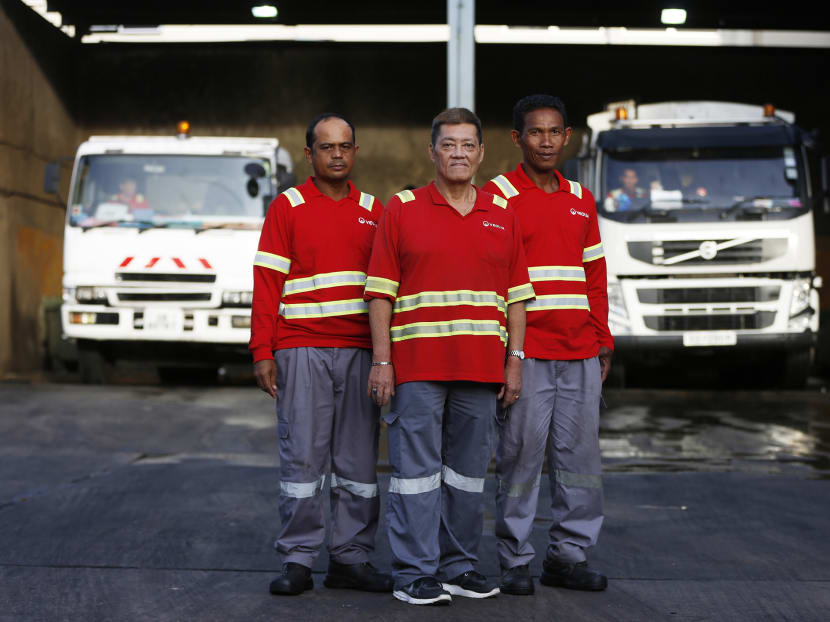
From left to right, Mr Amran Chedaud, Mr Tan Beng Hoe and Mr Jumahat Yusuf. The team is in charge of collecting recyclables daily from the homes in Clementi. Photo: Raj Nadarajan/TODAY
SINGAPORE — When refuse collector Jumahat Yusuf, 51, turned up for a job interview with public waste collector Veolia Singapore, his supervisor only asked two questions.
“‘Can you take the dirt? Can you tahan (tolerate) the smell?’ I said can...and I got the job,” said Mr Jumahat with a grin. He did not mind the stench and dirt from the garbage as he worked as a cleaner before joining Veolia three years ago.
Even the occasional comment from commuters on his train ride home about the lingering smell after a 12-hour shift did not bother him. “I know I am (earning) a living… what people want to say is up to them, I just ignore it,” added Mr Jumahat, who is married with a 17-year-old son.
.embed-container { position: relative; padding-bottom: 56.25%; height: 0; overflow: hidden; max-width: 100%; } .embed-container iframe, .embed-container object, .embed-container embed { position: absolute; top: 0; left: 0; width: 100%; height: 100%; }There are also Singaporeans who turn up their noses at the job of a garbage collector.
When TODAY followed driver Sairon Runa, 59, and his crew on their scheduled route to collect garbage from landed homes, a young boy, accompanied by a domestic helper, pinched his nose as he walked past the garbage truck.
While Mr Sairon admits that it took him some time to get used to the smell, he is unaffected by such reactions from others, adding that he takes pride in his work.
“Because you are the one who made… the environment worse. We are the ones who clear it for you, so we are proud. Without us, I don’t know what (will happen),” he said.
Known as a clean and green city, Singapore’s litter-free streets are a credit to the work of an army of cleaners and refuse collectors here. Last year, Singapore generated 2.09 million tonnes of domestic waste, a dip from the previous year. However, only 21 per cent of the waste was recycled – a far cry from the Government’s target of 30 per cent by 2030.
ALL IN A DAY’S WORK
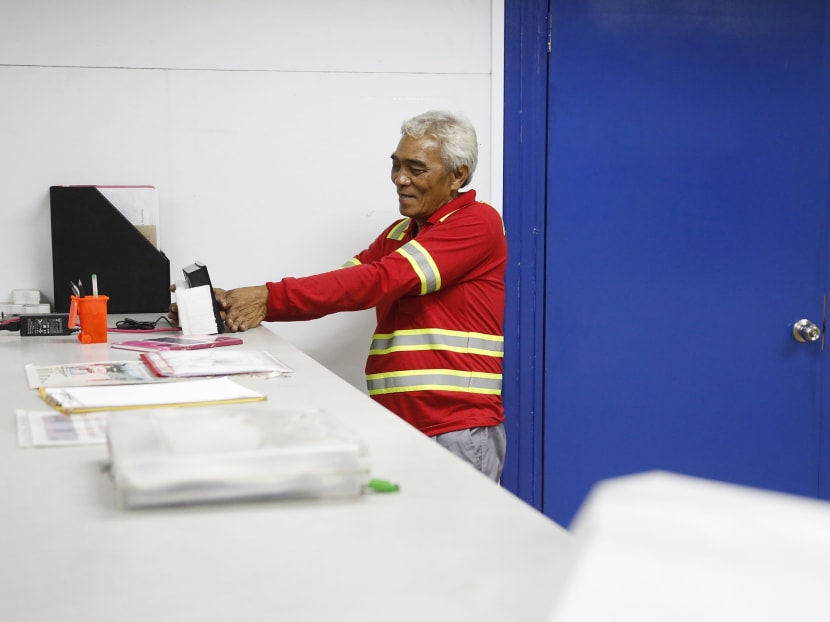
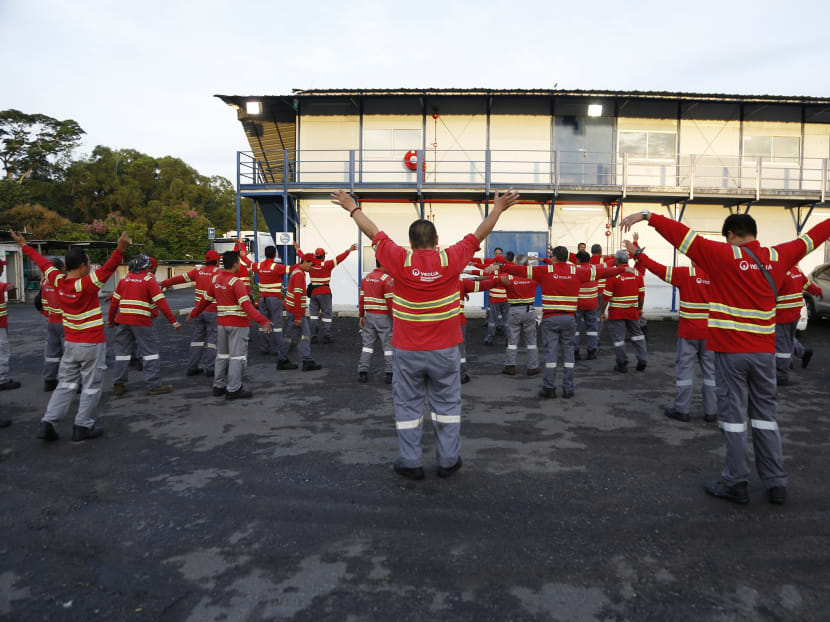
Over at the Veolia depot in Lorong Halus, Mr Sairon and his two attendants start their day at 6.30am, as he scans his thumbprint and collects the toolbox of safety checklists before joining his colleagues for a round of morning exercises and stretches.
Once they are given the green light from the mechanics, they hop onto their truck and set off at around 7.15am. They ply the roads around Simei, Jalan Angin Laut and Jalan Hajijah daily.
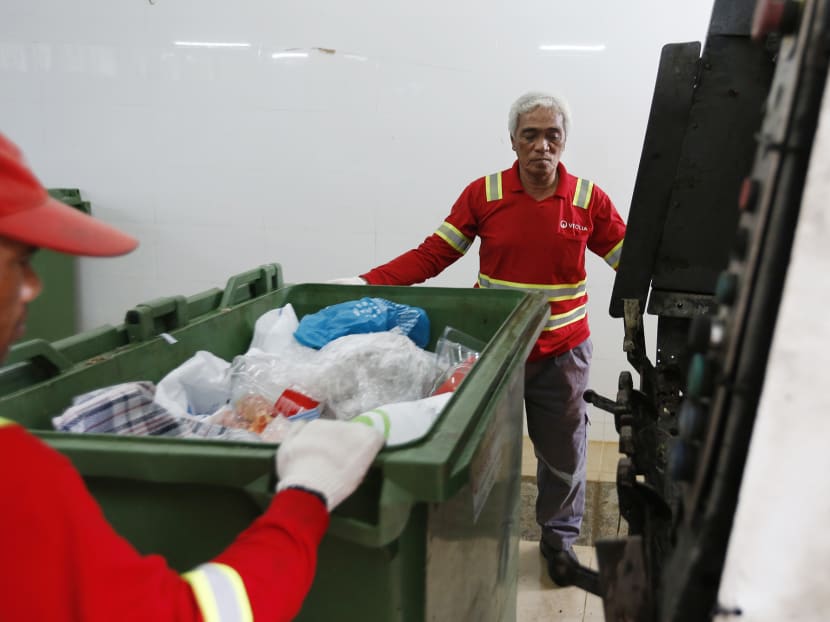
For the next few hours, the attendants hop on and off the back of the truck to pick up bags of garbage or drag the green bins so that they can be picked up by the truck’s rear-end loader. Whenever they drive into tight spaces, one of them will hop off the truck to guide Mr Sairon. It took the driver five years’ of practice to manoeuvre effortlessly around these spaces, he said.
Lunch is usually eaten on the truck because of their tight schedule. His crew usually has packed rice but Mr Sairon prefers to keep his meal light with just two slices of white bread and coffee.
He jokes that his friends used to think he had no money to buy more food but he explains that his stomach is not used to heavy meals and he will have to hunt for a toilet while working.
“Only after I come back from work (then) I have the appetite to eat. Because my responsibilities at work are already done,” he added.
Depending on the amount of waste they collect each day – which ranges from 10 to 15 tonnes – the crew will make one or two trips to the Senoko Waste-to-Energy plant to dispose the refuse.
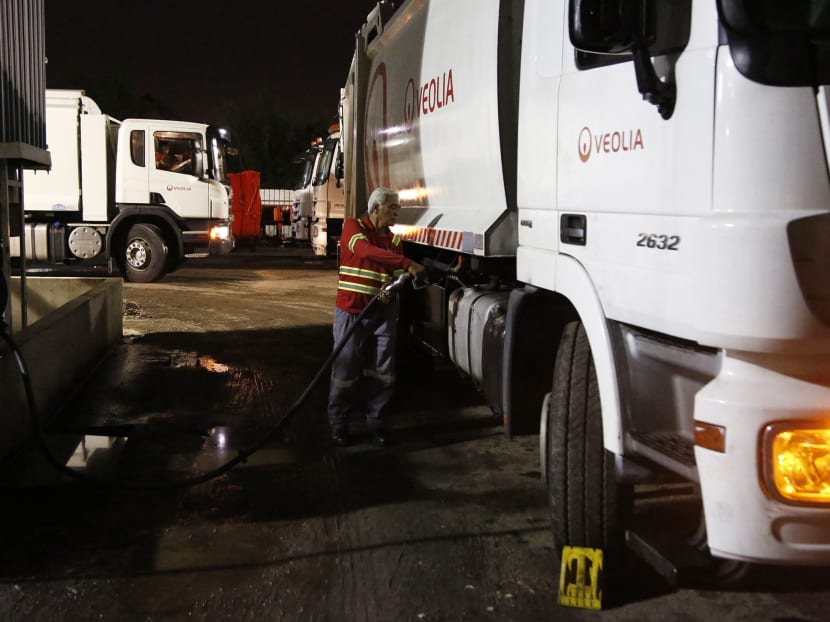
After returning to the depot in the evening, the attendants wash the truck and Mr Sairon fills the tank with diesel before calling it a day.
RECOGNISING WORKERS
While automation and technology have helped reduce the number of workers needed to collect waste, Waste Management and Recycling Association of Singapore (WMRAS) chairman Melissa Tan said the waste collection industry is still a manpower-intensive one. The association is also trying to introduce these intiatives to make the job safer for the aging workforce and redesign jobs to attract the younger generation.
“The aim is to reshape the mindset of Singaporeans and the younger generation to think less of waste as dirty, dangerous, and demanding, but as a necessity,” said Ms Tan.
It has also made an effort to recognise the work of waste collectors, and Mr Jumahat and Mr Sairon were part of the two teams that won the Gold and Bronze awards respectively at last month’s WMRAS Excellence Awards.
Recounting the incident that helped them bag the award, Mr Jumahat said his team was collecting recyclables from a landed house in Clementi in August when they met a female resident who was locked out of her home after stepping out to throw her garbage. After talking to her, he climbed over the gate and unlocked it for her.
While there are some who dismiss and disregard the profession, there are others who appreciate the garbage collectors’ work. One resident at Sea Breeze Road, who declines to be named, usually exchanges greetings with Mr Sairon and his crew but he admits that he has never asked for their names because the team are busy.
“It’s not an easy job. ‘Would you want to work as a garbage collector’?” he said.
Each time someone asks driver Tan Beng Hoe, 59, why he has chosen this line of work where he has to put up with the smell and dirt, the former crane operator will tell them: “Even if it’s smelly, it is a job that has to be done.”
Despite having to work on some public holidays, he signed up as he wanted a less stressful job.
The pay was also a common reason for those who made the career switch but Veolia declined to reveal their salaries.
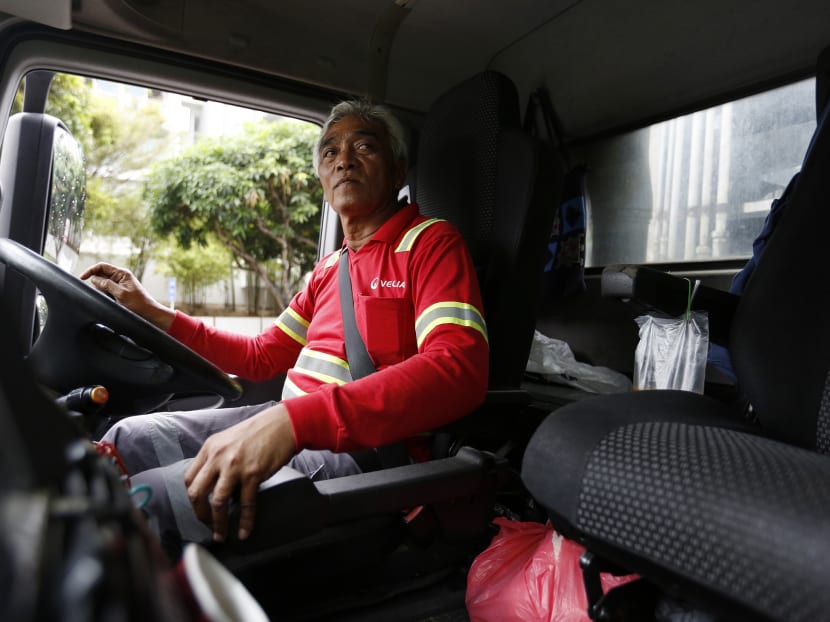
For Mr Sairon, who studied up till Secondary 1, the job has helped him support his wife and seven children, aged 18 to 30 years old.
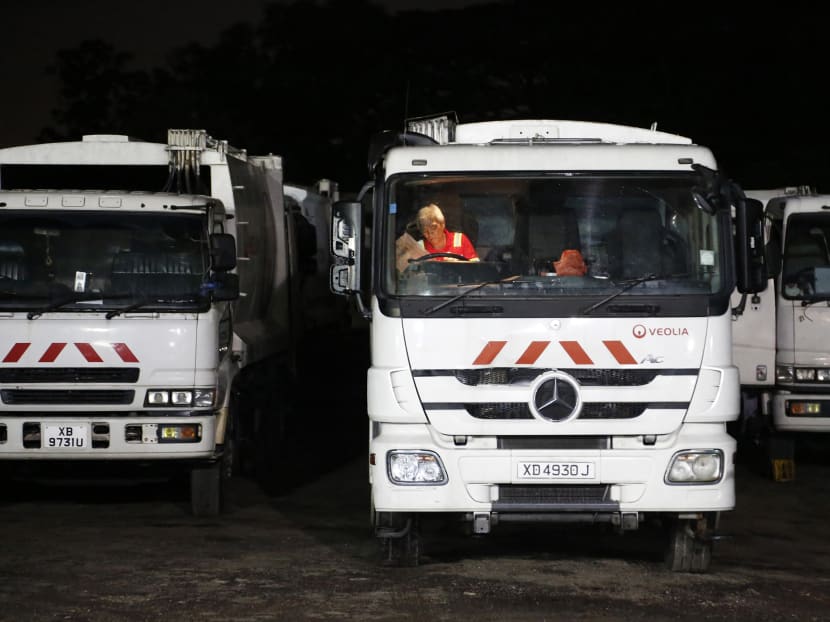
When asked if his children minded his job, he said: “No, my children know I don’t have qualifications, I only have a driving licence but I’m earning (money) every month to survive and support them until now. I feel very proud you know, my children can study, can get work, I’m very happy already.”






